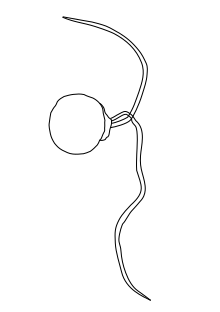Provora
| Provora | |
|---|---|

| |
| Ubysseya fretuma, a nibblerid predator | |
| Scientific classification | |
| Clade: | Diaphoretickes |
| Clade: | Provora Tikhonenkov et al. 2022 |
| Clades | |
Provora is a proposed supergroup of eukaryotes made up of predatory microbes, "devouring voracious protists". It was reported that ten strains were isolated and cultured in 2022. They are predators of other microorganisms. Their discovery was very delayed, compared to other microorganisms in their environments, due to their rarity. Their 18S ribosomal RNA is very different from that of other eukaryotes consistent with their being a lineage without close relatives; this was confirmed by phylogenomic analyses of datasets of several hundred proteins, so they were taxonomically placed in a separate supergroup.
Phylogeny
External relationships
The supergroup Provora is composed of strains that form an ancient lineage within the eukaryote clade Diaphoretickes. Phylogenetic analyses have recovered the following cladogram shape:
Internal relationships
The phylogenetic relationships between the 7 described species is the following:
| Provora | |
References
- ^ a b c d Tikhonenkov, Denis V.; Mikhailov, Kirill V.; Gawryluk, Ryan M. R.; Belyaev, Artem O.; Mathur, Varsha; Karpov, Sergey A.; Zagumyonnyi, Dmitry G.; Borodina, Anastasia S.; Prokina, Kristina I.; Mylnikov, Alexander P.; Aleoshin, Vladimir V.; Keeling, Patrick J. (2022). "Microbial predators form a new supergroup of eukaryotes". Nature. 612 (7941): 714–719. Bibcode:2022Natur.612..714T. doi:10.1038/s41586-022-05511-5. PMID 36477531. S2CID 254436650.